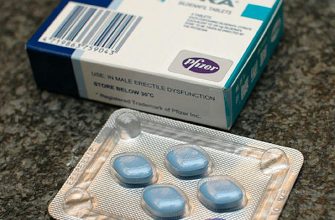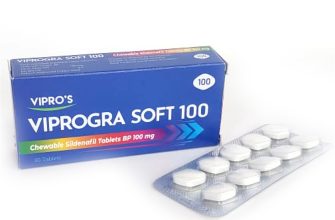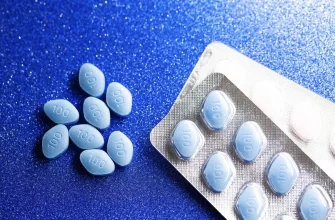Prednisone can lower your blood pressure, sometimes significantly. Monitor your pressure regularly, especially during the first few weeks of treatment and after dosage changes. Target readings should be discussed with your doctor; they vary based on individual health.
This effect is more pronounced in individuals already prone to low blood pressure (hypotension). If you experience dizziness, fainting, or weakness, contact your healthcare provider immediately. These symptoms could indicate a dangerous drop in blood pressure.
Hydration is key. Drinking plenty of fluids helps maintain blood volume and counteract the blood pressure-lowering effect of prednisone. Your doctor can advise on the ideal daily intake for your specific needs.
Dietary changes may also be beneficial. Increasing your sodium intake slightly (under medical supervision) can help raise blood pressure. Focus on foods naturally rich in sodium, instead of processed foods, and discuss appropriate amounts with your doctor.
Regular check-ups are crucial. Your doctor will monitor your blood pressure and adjust your prednisone dosage or recommend other interventions as needed to manage this potential side effect. Open communication with your doctor is the best approach.
- Low Blood Pressure and Prednisone
- Managing Low Blood Pressure while on Prednisone
- Lifestyle Changes
- Understanding Prednisone’s Impact on Blood Pressure
- Common Symptoms of Low Blood Pressure on Prednisone
- Prednisone Dosage and Blood Pressure Risk
- Monitoring Blood Pressure While Taking Prednisone
- Lifestyle Modifications to Manage Low Blood Pressure
- When to Consult a Doctor About Low Blood Pressure and Prednisone
- Symptoms Requiring Immediate Medical Attention:
- Reasons to Schedule a Doctor’s Appointment:
Low Blood Pressure and Prednisone
Prednisone, a common corticosteroid, can sometimes cause low blood pressure, particularly at higher doses or with prolonged use. This happens because it can affect the body’s ability to retain sodium and water, which are crucial for maintaining blood volume and pressure. Monitor your blood pressure regularly, especially during the initial phases of treatment and any dose adjustments. Report any significant drops in blood pressure to your doctor immediately. They may adjust your dosage or prescribe supplemental medications.
Managing Low Blood Pressure while on Prednisone
Staying hydrated is key. Drink plenty of water and consider adding a pinch of salt to your food or water, as sodium helps with fluid retention. Your doctor might recommend a low-sodium diet to balance this. Regular blood pressure checks are vital for early detection of any problems. Follow your doctor’s instructions diligently and don’t hesitate to contact them with concerns. In some cases, they may prescribe medication to counteract the blood pressure-lowering effects of prednisone, such as mineralocorticoids.
Lifestyle Changes
Maintain a healthy lifestyle to support your cardiovascular health. This includes regular exercise, a balanced diet, and stress management techniques. These factors can significantly impact blood pressure levels. Avoid alcohol and caffeine, which can exacerbate low blood pressure. Always inform your healthcare provider about all medications and supplements you are taking, even over-the-counter ones, to avoid potential drug interactions.
Understanding Prednisone’s Impact on Blood Pressure
Prednisone, a corticosteroid, can affect your blood pressure in several ways. It primarily increases blood pressure by causing your body to retain sodium and water, increasing blood volume. This elevates the pressure against your artery walls.
Here’s what you need to know:
- Initial Effects: Many people experience a rise in blood pressure within days of starting prednisone, particularly with higher doses.
- Duration: The effect on blood pressure is usually dose-dependent. Higher doses generally lead to more significant increases and longer-lasting effects. Lower doses might have less noticeable impacts or none at all.
- Individual Variation: The response varies widely between individuals. Some experience a pronounced increase, while others might see little or no change.
- Underlying Conditions: Existing hypertension significantly increases the risk of dangerously high blood pressure while on prednisone.
Here are some recommendations:
- Regular Monitoring: Closely monitor your blood pressure regularly, as advised by your doctor, especially when starting or adjusting your prednisone dose.
- Dietary Changes: A low-sodium diet helps mitigate fluid retention. Consult a dietitian or your doctor for personalized guidance.
- Medication Adjustments: Your doctor might adjust your blood pressure medication if necessary, while you are on prednisone. They may need to increase the dose of your current medication or prescribe a new one altogether.
- Open Communication: Report any significant changes in your blood pressure to your doctor immediately. Early detection and proactive management are crucial.
Remember, this information is for educational purposes only and should not replace professional medical advice. Always consult your physician before making any decisions related to your health or medication.
Common Symptoms of Low Blood Pressure on Prednisone
Pay close attention to your body. Low blood pressure while taking prednisone can manifest in various ways. Recognizing these symptoms promptly is crucial for managing your condition.
Lightheadedness or dizziness are frequently reported. You might experience a sudden feeling of faintness, especially when standing up quickly. This is often due to a decrease in blood flow to the brain.
Fatigue is another common symptom. This isn’t just tiredness; it’s a persistent feeling of exhaustion that may impact your daily activities. Weakness, accompanied by muscle fatigue, is also possible.
Blurry vision or visual disturbances can occur. Changes in your vision, however subtle, warrant immediate attention.
Nausea and vomiting, while less frequent than other symptoms, are still possible side effects of low blood pressure. This can be accompanied by a general feeling of unwellness.
The following table summarizes these symptoms and their severity:
| Symptom | Severity |
|---|---|
| Lightheadedness/Dizziness | Mild to Severe |
| Fatigue/Weakness | Mild to Severe |
| Blurry Vision | Mild to Moderate |
| Nausea/Vomiting | Mild to Moderate |
If you experience any of these symptoms, contact your doctor immediately. They can assess your condition and adjust your medication or treatment plan accordingly.
Prednisone Dosage and Blood Pressure Risk
Higher prednisone doses correlate with a greater risk of low blood pressure (hypotension). Doses exceeding 10 mg daily significantly increase this risk. Your doctor should carefully monitor your blood pressure, especially when starting or adjusting your prednisone prescription.
Short-term prednisone use at low doses (less than 5 mg daily) usually poses minimal blood pressure risk for most individuals. However, individual responses vary. Regular monitoring remains crucial.
Long-term use of prednisone, regardless of dosage, increases the chances of experiencing hypotension. This is because prednisone can influence fluid balance and electrolyte levels, impacting blood pressure regulation.
Factors influencing blood pressure risk: Pre-existing conditions like dehydration or heart problems amplify the risk. Other medications, especially diuretics, can exacerbate the problem. Open communication with your doctor about all medications is critical.
Managing the risk: Your physician may recommend gradual dose reductions to minimize blood pressure fluctuations. Regular blood pressure checks are essential. Maintaining adequate hydration and a balanced diet play a supportive role.
Symptoms to watch for: Dizziness, lightheadedness, fainting, and fatigue may signal low blood pressure. Report these symptoms immediately to your doctor.
Remember: This information is for general knowledge and should not replace professional medical advice. Always consult your doctor before starting or changing any medication, especially prednisone.
Monitoring Blood Pressure While Taking Prednisone
Regularly monitor your blood pressure at home. Aim for at least twice daily readings, ideally morning and evening. Use a reliable, validated home blood pressure monitor and follow the instructions carefully for accurate results.
Record your readings in a journal or use a blood pressure tracking app. Note the date, time, and both systolic and diastolic numbers. This detailed record helps you and your doctor identify trends.
Report any significant changes to your doctor immediately. A sudden drop or increase in blood pressure warrants prompt medical attention. Don’t hesitate to contact them if you have concerns, even if the change seems small.
Your doctor may adjust your prednisone dosage or prescribe additional medication to manage blood pressure fluctuations. Closely follow their instructions and attend all scheduled appointments. Open communication with your doctor is key.
Maintain a healthy lifestyle to support blood pressure control. This includes regular exercise, a balanced diet low in sodium and high in potassium, and stress reduction techniques like meditation or yoga.
Understand that individual responses to prednisone vary. Your experience may differ from others. Trust your body and rely on your doctor’s guidance for personalized care.
Lifestyle Modifications to Manage Low Blood Pressure
Increase your sodium intake gradually. Consult your doctor for guidance on the appropriate amount, as excessive sodium is detrimental to health. Small, frequent increases are safer than large, sudden changes.
Drink plenty of fluids, especially water. Dehydration worsens low blood pressure. Aim for at least eight glasses daily, adjusting according to your activity level and climate.
Increase your dietary intake of salt-rich foods. This can include adding a pinch of salt to your meals, choosing salty snacks (in moderation), or consuming foods naturally high in sodium like olives, pickles, or broth-based soups.
Elevate the head of your bed by 6-8 inches. This simple adjustment can improve nighttime blood pressure.
Regularly check your blood pressure at home. Monitor your readings to quickly identify any significant drops and adjust your strategy accordingly. This allows for early intervention if needed.
Engage in moderate exercise most days of the week. Aim for at least 30 minutes of activity. Gentle exercises like walking or swimming are good starting points.
Avoid prolonged standing or sitting. Get up and move around frequently to prevent blood pooling in your legs.
Address any underlying medical conditions. Conditions like dehydration, anemia, or heart problems can contribute to low blood pressure. Work closely with your physician to address these.
Maintain a healthy weight. Being overweight or obese can negatively affect blood pressure. A balanced diet and regular exercise contribute to a healthy weight.
Reduce alcohol consumption. Excessive alcohol use can lower blood pressure. Moderate consumption, if permitted by your physician, is key.
When to Consult a Doctor About Low Blood Pressure and Prednisone
Seek immediate medical attention if you experience dizziness or fainting alongside low blood pressure while taking prednisone. This combination can indicate a serious problem requiring prompt treatment.
Symptoms Requiring Immediate Medical Attention:
Beyond dizziness and fainting, contact your doctor immediately if you develop chest pain, shortness of breath, or significant changes in your vision. These could signal more severe complications.
Reasons to Schedule a Doctor’s Appointment:
Schedule an appointment with your doctor if you consistently experience low blood pressure, even without severe symptoms. Regular monitoring is crucial for managing this side effect. Also, report any persistent headaches, nausea, or unusual fatigue that might be linked to your low blood pressure. Your doctor can adjust your prednisone dosage or recommend supplementary treatments if needed.
Remember to communicate all symptoms clearly to your doctor, including the severity and frequency. Providing a complete picture of your health will help your doctor make the best decisions for your care.









